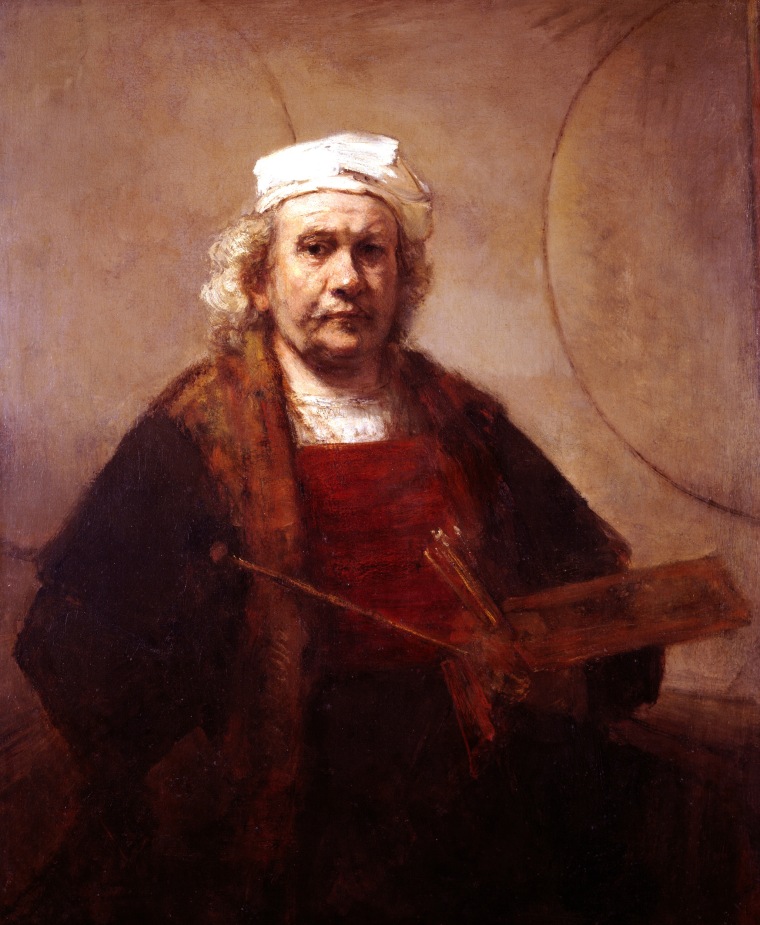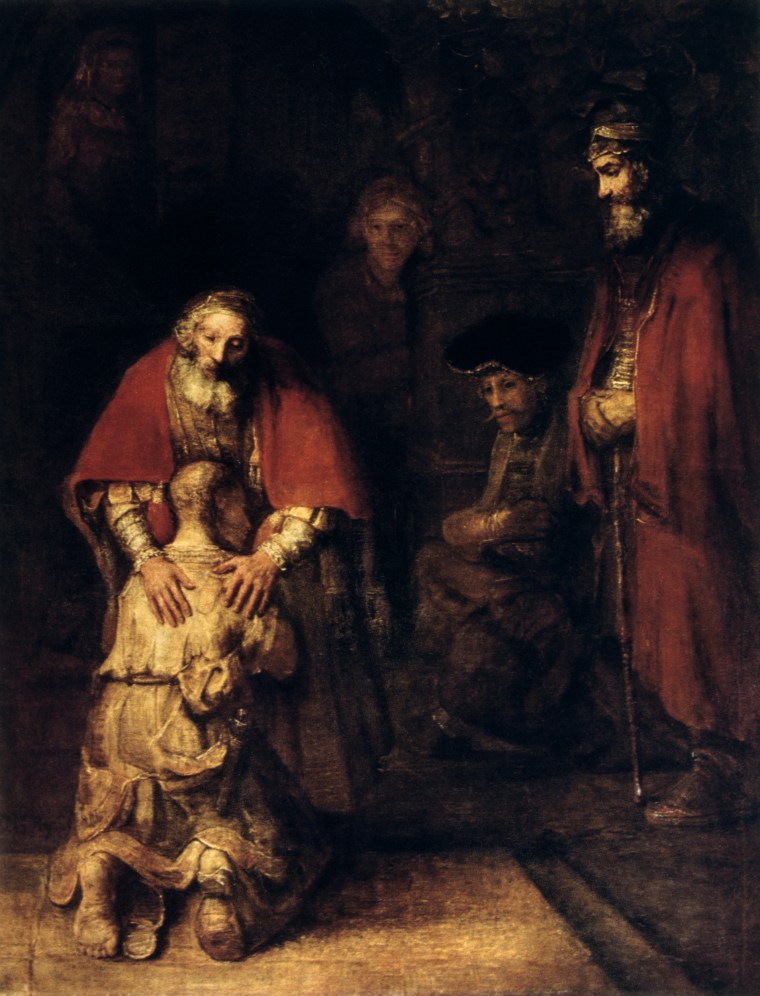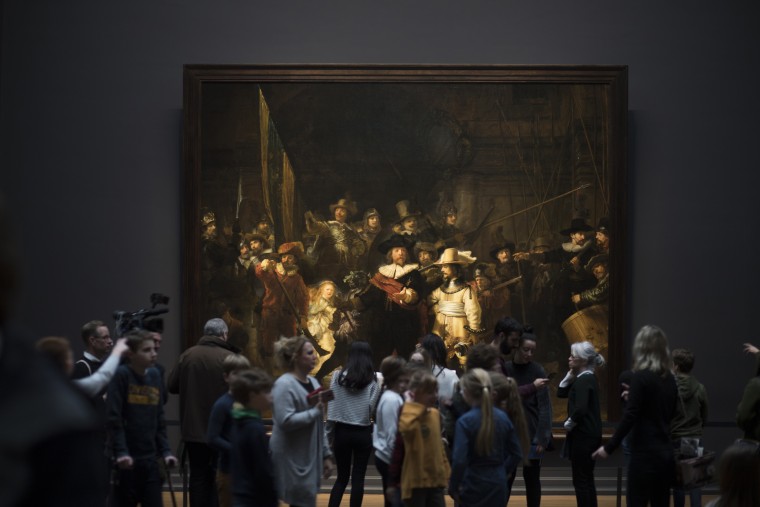It has been 350 years since Rembrandt van Rijn died penniless in Amsterdam on Oct. 4, 1669, but there’s much modern Americans can learn from the deceased Dutch master through the works he left behind. Rembrandt was known for the 17th century equivalent of the selfie: He created an unusual number of self-portraits — close to 100 throughout his life — but there is a stubborn honesty to these works that far removes him from some heavily doctored posts in 2019.
Gaze upon the range of Rembrandt self-portraits and you’ll see a man aging as close to real time as you get for the 1600s.
The average millennial will snap a lifetime total of more than 25,000 selfies. But unlike Rembrandt, in our highly filtered Instagram culture, we rarely seek to show ourselves as we are; we project ourselves as we wish to be seen. Social media encourages the facade by linking the natural human desire for validation to the viral power of the internet. Toss in the near universal fear of rejection, the other side of the validation coin, and we see a race away from reality.
Rembrandt did the opposite. In doing so, his honest self-portraits become models of courage, showing us how to engage life as it really is, as opposed to a filtered, ultimately fake existence built by fear.
Gaze upon the range of Rembrandt self-portraits and you’ll see a man aging as close to real time as you get for the 1600s. The impish eyes, unruly hair and confident look of “Self Portrait as a Young Man” was painted when Rembrandt was 23. While his use of chiaroscuro conceals his eyes, there is nevertheless great vulnerability in faithfully presenting one’s own face.

Forty years later, he has become the weary-eyed, gray old man of “Self Portrait with Two Circles.” He’s gotten fat. There are lines on his face. The chiaroscuro is still there, but there is nevertheless no filter.

It’s not that there weren’t any materialistic reasons driving Rembrandt’s art. He had strong financial incentive to sell his portraits, especially later in life. He married into wealth but lived beyond his means, especially when it came to real estate. After his wife’s death, his reputation among Amsterdam elites plummeted when his affairs became known. It cost him commissions.
The portraits also had some creative utility; he used them as studies for other, larger works. But it’s hard to conclude he produced them all for “the love of the gram,” in the way we do so frantically today. If that were so, Rembrandt’s later self-portraits might appear gentler, less haggard.
They don’t. The youthful energy of Rembrandt the young man has yielded to one weighed down by life, loss of loved ones to illness, loss of reputation and housing to poor decisions.
For Americans in 2019, the lesson seems to be, “This is real life.”
And we might add another lesson: You cannot be at peace with others until you make peace with yourself, with reality.
Rembrandt’s “The Return of the Prodigal Son” captures this truth. We see the wayward son of Jesus’ parable on his knees, face buried in his father’s robes. The boy has just returned from squandering his inheritance in a faraway land. Realizing his sin and starving for both food and love, he comes home to his father, who has been lovingly waiting for him ever since he left.

The son’s grief and shame, more readily identifiable emotions, would be easier to capture than the sublime blend of relief, joy and love in the face of the boy’s father. But Rembrandt, at the height of his artistic powers, shows us the father.
The son’s face stays hidden. And as a result, his becomes the face of all humanity. Your face and mine. Turned away from the viewer, it is the very opposite of the selfie. Ironically, it is the face of one no longer hiding his failings. His honest, hard look at himself, though incredibly painful, has brought him back into relationship with another.
For Americans weary of division, this is Rembrandt’s great gift. This is the answer to tribalism, relentless self-promotion, pursuit of validation and the constant foisting of ourselves onto the world for money, attention, respect.
Rembrandt himself, beset with debts, likely knew these drives well. But in his painting, he offers a way out, epitomized by the “The Return of the Prodigal Son.” If such a broken person as the prodigal son can be reconciled, so can we.
How do we know? Because, at rock bottom, we all have a fundamental shared dignity. Rembrandt showed it by including everyone as subjects in his art. Wealthy patrons. His family. The homeless. In his works, they all have dignity and beauty. Not necessarily by looks; they do not all have high cheekbones or perfectly symmetrical faces. But it’s clear the artist strived, in his own words, to give them “the greatest and most natural movement.”
We all have a fundamental shared dignity. Rembrandt showed it by including everyone as subjects in his art. Wealthy patrons. His family. The homeless.
I should confess to having no formal training in art history; my principal experience has been in national security at the Pentagon, working with and among people highly attuned to life’s grimmest realities.
But Rembrandt matters in this context, too. Perhaps especially so.
Because if we are all worth painting, we are all worth protecting. And like Rembrandt’s art, those entrusted with the responsibility to protect will need to uphold the dignity of the human person. They will need to engage with the world as it really is, as opposed to a filtered, ultimately fake existence built by fear. And they will need to do these things through deep, strong relationships with one another.

